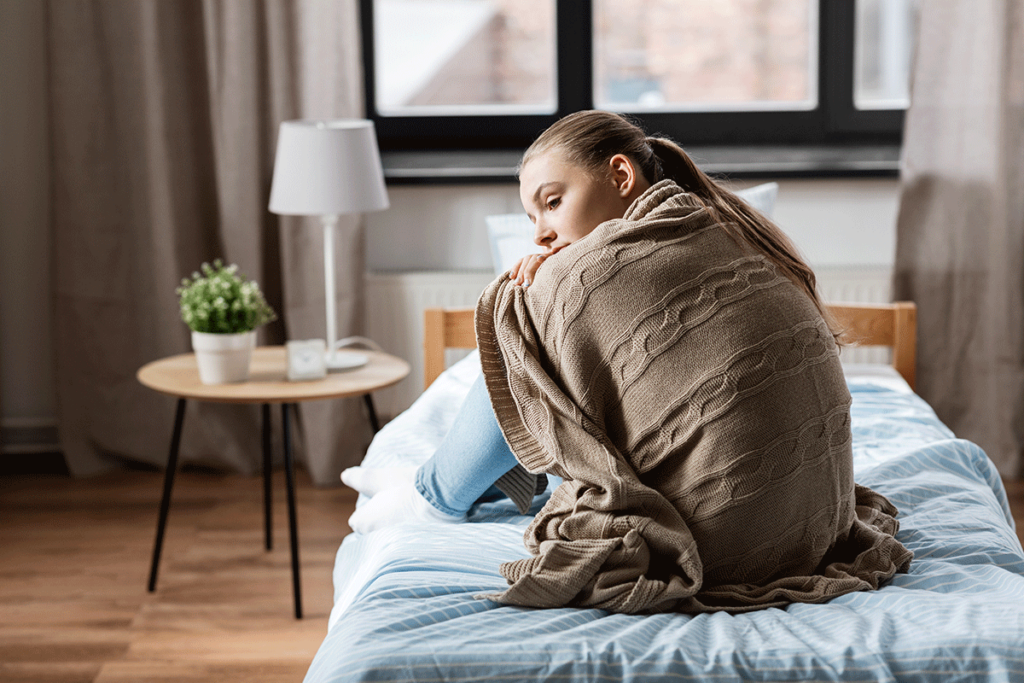Bipolar disorder is a mood disorder that affects thousands of people in the U.S. While less common in children and adolescents, it can still occur and significantly impact their daily lives. One of the more common issues that people with bipolar disorder face is insomnia. Sleeping tips for teens with bipolar disorder can help young people get a good night’s rest.
Sleep is a crucial component of mental and physical health, but it can be challenging to get adequate rest when dealing with bipolar disorder. If you’re struggling with bipolar and severe insomnia, don’t hesitate to contact Imagine Seattle for support. With bipolar disorder treatment, we can work toward improved mental wellness.
Is Insomnia a Side Effect of Bipolar Disorder?
Insomnia is a common side effect of bipolar disorder. People with bipolar disorder often experience changes in their sleep patterns, including trouble falling and staying asleep. This can be due to manic or hypomanic episodes, which can cause racing thoughts, increased energy, and decreased need for sleep. Additionally, depressive episodes can make it difficult to fall asleep and cause frequent awakenings during the night. This can lead to severe insomnia, further exacerbating the symptoms associated with bipolar disorder.
Sleeping Tips for Teens with Bipolar Disorder
Stick to a Routine
Establishing a consistent sleep schedule is essential for people with bipolar disorder. This means going to bed and waking up simultaneously each day, even on weekends. This can help regulate the body’s circadian rhythms and promote better sleep.
Create a Sleep-Conducive Environment
It is crucial to create a comfortable and relaxing sleep environment. This means keeping the bedroom dark, cool, and quiet. Use blackout curtains, earplugs, or a fan to create the ideal sleeping environment.
Relax Before Bedtime
Engaging in relaxing activities before bedtime can help promote better sleep. Consider taking a warm bath, reading a book, or practicing deep breathing exercises to calm the mind and body before sleeping.
Limit Screen Time
The blue light emitted from screens can disrupt the body’s natural sleep-wake cycle. Limiting screen time before bedtime and avoiding using electronic devices in bed is recommended. Instead, consider reading a traditional book or listening to calming music before sleep.
Discuss Medication Options
In some cases, medication may be necessary to help manage the symptoms of bipolar disorder and promote better sleep. Discussing medication options with a healthcare provider to determine the best treatment plan for each individual is important.
Bipolar Disorder Treatment at Imagine Seattle
At Imagine Seattle, our PHP offers comprehensive mental health treatment for 12-17-year-olds, including those with bipolar disorder. Our trauma-informed care, medication management, and therapeutic interventions, such as CBT, DBT, and trauma therapy, aim to improve and support the mental health of our patients. We also offer educational advocacy to ensure our patients can continue their education while receiving treatment.
If you’re struggling with bipolar disorder and severe insomnia, don’t hesitate to contact Imagine Seattle. Our compassionate and experienced providers are here to help. We can schedule a consultation and learn more about how we can help support you or a loved one on the path toward mental wellness,
Start Treatment for Bipolar Disorder at Imagine Seattle Today
By establishing a consistent sleep schedule, creating a comfortable sleep environment, avoiding stimulants, and engaging in regular exercise, teenagers with bipolar disorder can improve their sleep quality. If your teen struggles with bipolar disorder and severe insomnia, we encourage you to contact Imagine Seattle. We can help develop a personalized treatment plan to improve sleep and manage symptoms associated with bipolar disorder. Contact us today at 888.346.0473 or complete our online form to take the first step.

